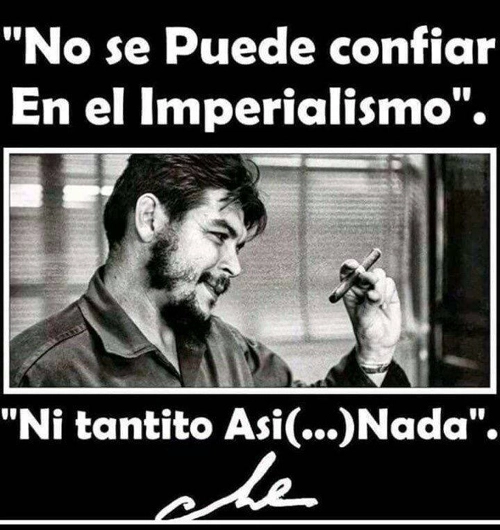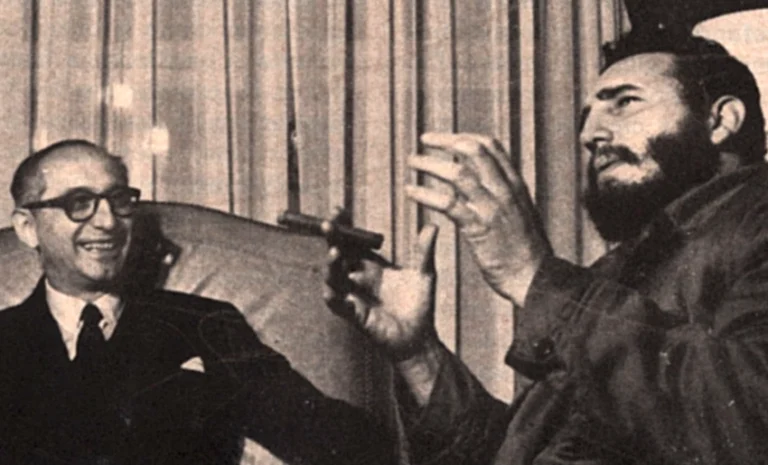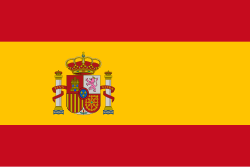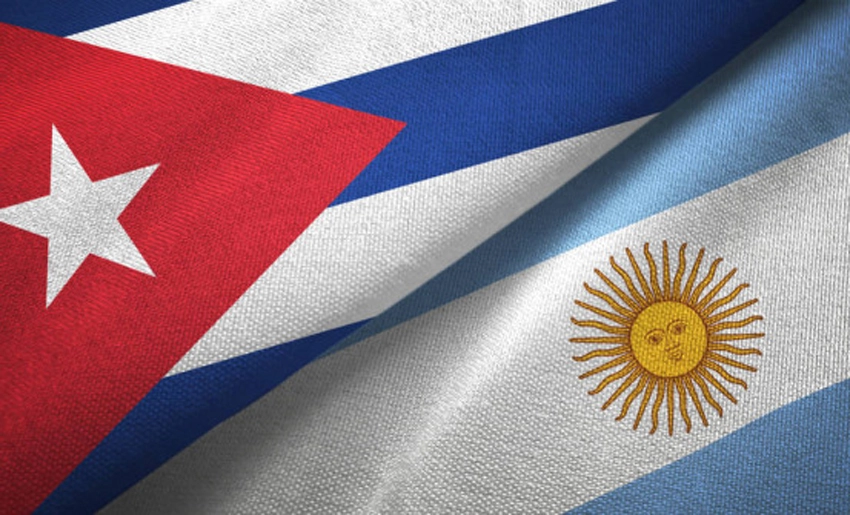To the historical truth that relations between Argentina and Cuba have not always been harmonious -even when there are things that bring them closer-, now the new president of that South American republic, Javier Milei, adds shameful actions contradicting Marti’s principle that “conciliation is the fortune of the peoples”.
Ten thousand kilometers separate this Caribbean island from the largest Spanish-speaking country in the world and the second largest in Latin America, both were colonized by the Spanish empire, achieving independence in 1816 and 1902, respectively.
Previously, in August 1762, Havana had been taken by English troops, while in 1806 and 1807, the people of Buenos Aires repulsed two invasions by that European country.
On the other hand, in 1833, British forces illegally occupied the Falkland Islands, replacing its inhabitants, and in 1898, the United States established a naval base in Guantanamo Bay. In both cases, they maintain that status, despite repeated claims at the international level.
On May 12, 1909, Cuba and Argentina established official relations, which were broken up in 1962 -together with the rest of the Latin American region, except Mexico, as a result of the international isolation of the country boosted by the United States, and the nicknamed Missile Crisis, eleven years later, in 1973, they were reestablished, in spite of imperial pressures.
In order to refer to the history of Argentine-Cuban relations, it is necessary to think of José Martí, Che Guevara and tango, immortalized by Carlos Gardel.
Since 1882, the Apostle of Cuban independence maintained a close relationship with that South American country, publishing chronicles in the newspaper La Nación of Buenos Aires, which he sent from New York as “Letters to the Editor”, which, due to their content, aroused the admiration of the readers, and on October 12, 1888, he was appointed representative of the Buenos Aires Press Association in the United States and Canada.
José Martí was also appointed, two years later, Consul General of the Argentine Republic in New York. He held this position until October of the following year, when he resigned the following year, to devote himself body and soul to the organization of the Necessary War in the United States.

On the other hand, there is the historical transcendence of Che Guevara, who was born in the city of Rosario, in the province of Santa Fe, with Fidel Castro in the expedition of the Granma yacht from Mexico and climbed to the Sierra Maestra mountains, where he reached the rank of Comandante.
He also shared with Comandante Camilo Cienfuegos the invasion to the West of the country and after the victory of January 1959 he held different political and administrative responsibilities.
After obtaining Cuban nationality in 1960, which he renounced five years later, he left for Bolivia with the purpose of creating a revolutionary guerrilla movement, on October 9, 1967 he was assassinated by orders of the Central Intelligence Agency (CIA).
Without ever renouncing to his condition of Argentinean, the only time he was able to set foot again in his homeland was on October 9, 1967, in a clandestine way, and he had the chance of talking with the then president Arturo Frondizi.
And in the historical cultural link between the two peoples, the main protagonist is the tango, a musical genre of which he has been an excellent and passionate promoter, from a very early age, the distinguished Holguin born artist Martín Arranz, who has been an excellent and passionate advocate and promoter since very early ages, thru a radio show in CMKO station and the rich collection of graphic material and records of Carlos Gardel, as well as of Hugo del Carril, among others, always highlighting the content of the lyrics.
People, almost by instinct, tend to show solidarity with each other.
Delving into history, which Martín Arranz preserves with such zeal, this journalist learned that on July 9, 1869, students and residents of the Rio de la Plata, gathered in the old Teatro Argentina, agreed to send a vote of sympathy to the Cuban people who had risen up in arms nine months earlier (October 10, 1868), in the place called La Demajagua, led by hero Carlos Manuel de Céspedes.
In September 1872, Argentina was one of the Latin American nations that, at the proposal of Colombian President Manuel Murillo, demanded the independence of Cuba from Spain, received and cared for migrants who suffered the consequences of the war; however, when the U.S. intervened at the end of the war war organized by José Martí and seized the imminent victory of the imminent victory of the Liberation Army against the Spanish colonialists, Argentina adopted a position of neutrality in that conflict.
When the Cuban revolution triumphed on January 1, 1959, both countries maintained official relations and in May that same year, Fidel visited Argentina, where he was received by the president, Arturo Frondizi, who in 1962, broke off relations with the Caribbean island, pressured by the United States when it imposed the ironclad economic, financial and commercial blockade, which is still in place.

In 1973, relations were normalized again and in 1986, President Raúl Alfonsín became the first Argentinean head of state to visit revolutionary Cuba, on which occasion, Fidel emphasized: “This visit expresses Cuba’s sympathy for Argentina, which is a country very dear to all of us”.
Then, in 1995, the Cuban leader went to Bariloche and Mendoza, invited to the Fifth Ibero-American Summit the Fifth Ibero-American Summit, where he met with then President Carlos Menem who, in his second term refused to travel to Havana, in 1999, to attend the IX Ibero-American Summit.
In 2003, Fidel participated in the presidential inauguration of Néstor Kichner, occasion he spoke on the steps of the Law School of the University of University of Buenos Aires in front of some 30,000 people; and in 2006 he was invited to the city of Córdoba to participate in the 30th Summit of Heads of State and Government of the Americas.
Summit of Heads of State and Governments of Mercosur. All of these visits were working visits.
Also Osvaldo Dorticós Torrado (president of the Republic of Cuba from July 17, 1959 to December 2, 1976) – who had been between July 17, 1959 and December 2, 1976) – who had visited the Republic of Argentina in 1960 as part of a tour of six Latin American countries, returned to that nation in 1973 to participate in the presidential inauguration of Héctor Cámpora.
In 2008, Army General Raúl Castro Ruz assumes the presidency of Cuba, the following year he receives Cristina Fernández, successor of her husband Néstor Kichner. Visit that she reiterated in 2013, always as a friend of this revolutionary people to express solidarity.
And the current Cuban president, Miguel Díaz-Canel Bermúdez, has also visited twice (2019 and 2023) the land of San Martin, as a guest at the presidential investiture of Alberto Fernandez and to participate in the 7th Summit of the VII Summit of the Community of Latin American and Caribbean States, respectively.
Regardless of the periods in which relations between the two countries have been unsatisfactory, good gestures of friendship and solidarity have prevailed; Cuba receiving the necessary collaboration from the
Argentine people in hard times, which has been reciprocated by this Caribbean people with a large number of university graduates; the realization of the eye surgery Operacion Milagro, which restored sight to hundreds of people, and the program ‘Yo sí puedo’ (Yes, I can) program, through which thousands of illiterate people were taught to read and write.
Knowing these and other elements of the historical relations between the two nations, it is logical to think that in the future times may be better, because this is what José Martí foresaw when he said: “Only greatness engenders peoples and only clemency fortifies them”.
- Love for Cuba, says Peruvian professor living in Canada - 10 de October de 2025
- Pioneers from Holguin raise their voices in favor of peace - 29 de September de 2025
- The Memory that Saves Project Grows and Strengthens - 26 de September de 2025

